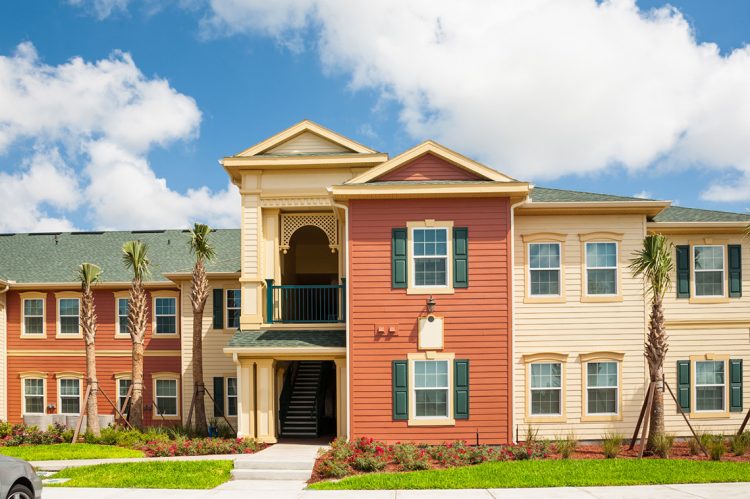After declining in the fourth quarter as growth decelerates, multifamily rents were flat in January at an average of $1,701, unchanged from December, according to a new from Yardi Matrix.
Yardi Matrix’s National Multifamily Report for January found that year-over-year rent growth continues to decline and is now 5.5%, down 70 basis points from last month. In addition, the single-family rental market remained strong amid volatility in the homebuying sector. The average single-family asking rent increased $1 in January to $2,070, while the YoY increase fell by 85 basis points to 4.2%.
Key highlights:
- The top YoY increases were led by Indianapolis (10.5%), San Jose (8.1%), Miami (7.5%) and Kansas City (8.3%). Markets outside the top 30 that continue to perform well include Albuquerque (10.2%), Northern New Jersey (7.9%), St. Louis (7.2%) and Salt Lake City (7.0%).
- Monthly increases were concentrated in gateway metros, topped by Boston (0.9%), Miami (0.6%), Chicago and New York (both 0.5%) and Philadelphia and Los Angeles (both 0.4%). The results were consistent with durable demand in large urban areas.
- As for monthly declines, Las Vegas saw the biggest decline at -0.5%, while Sacramento, Austin, San Jose, the Inland Empire and Washington, D.C., all fell by 0.4%.
- While rents are decelerating, growth is still strong across a broad range of markets.
- Demand for apartments remains healthy, even as household formation slowed in 2022 compared to a year earlier; 269,000 apartment units were absorbed. Metros with at least 10,000 units absorbed include Dallas, Houston, Austin, Washington, D.C., Atlanta, Chicago, Miami and Los Angeles. On a percentage of stock basis, leaders were Nashville (5.0%), Austin (4.1%), the Twin Cities (3.3%), San Jose (3.1%) and Columbus (3.0%).
- The average occupancy rate fell 90 basis points to 95.3% during the year as more than 400,000 units were delivered. Single-family occupancy rates fell 10 basis points in December to 95.9%, down 1.2 percentage points from a year ago.
- Rents rose slightly (0.1%) month-over-month in the Renter-by-Necessity segment, and were unchanged in the luxury Lifestyle segment.
- Renewal rent increases nationally fell to 10.2% year-over-year through November, a 160-basis-point drop from October. Growth reflects the process of property owners bringing existing tenants up to the level of asking rents, which means renewal rate growth will continue to decelerate in coming months. Florida still has the highest gains, with Tampa (16.9%), Orlando (14.6%) and Miami (14.3%) among the top four metros nationally.
- National lease renewal rates fell to 61.1% in November, down from 64.9% in October and the lowest level since before the pandemic. The decline could reflect that tenants facing increases and lower wage growth are starting to shop for lower rents, although the month could be an outlier.
Major takeaway:
“Participants at the late January National Multifamily Housing Council conference in Las Vegas were generally optimistic about demand fundamentals, but concerns centered around issues such as the wave of proposed rent control measures, increasing expenses and high mortgage rates,” said Matrix analysts.
The author of the report stated that “Early signs are encouraging. Rents remained consistent during the month in the middle of the seasonally slow winter season. And although markets where rents were well above trend in 2022—such as Miami, Tampa, Orange County and Nashville—have come back to the pack, overall growth is steady in most of Yardi Matrix’s top 30 metros.
“Another good sign is the economy, which would indicate that demand will remain healthy. Concerns about a hard-landing recession that would reduce household formation are being alleviated by the continuing stellar performance of the job market,” continued the author. “The economy created 517,000 new jobs in January on the heels of nearly 5 million new jobs in 2022, per the Bureau of Labor Statistics. January job growth was broad-based, led by leisure and hospitality (128,000), professional and business services (82,000), government (74,000) and health care (58,000). The unemployment rate dropped to 3.4%, while at the same time wage growth shows no signs of spiraling.
The author concluded, “Nothing about the numbers would indicate a weakening of household finances that would lead housing demand to drop sharply. If there is a cloud in the outlook for the industry, it would be that the Federal Reserve might take the strong labor market as a sign to keep pushing short-term interest rates higher, which is a headwind for the commercial property market. The upshot, however, is that early data indicates solid evidence for a multifamily soft landing in 2023.”
For the full report, click here.












